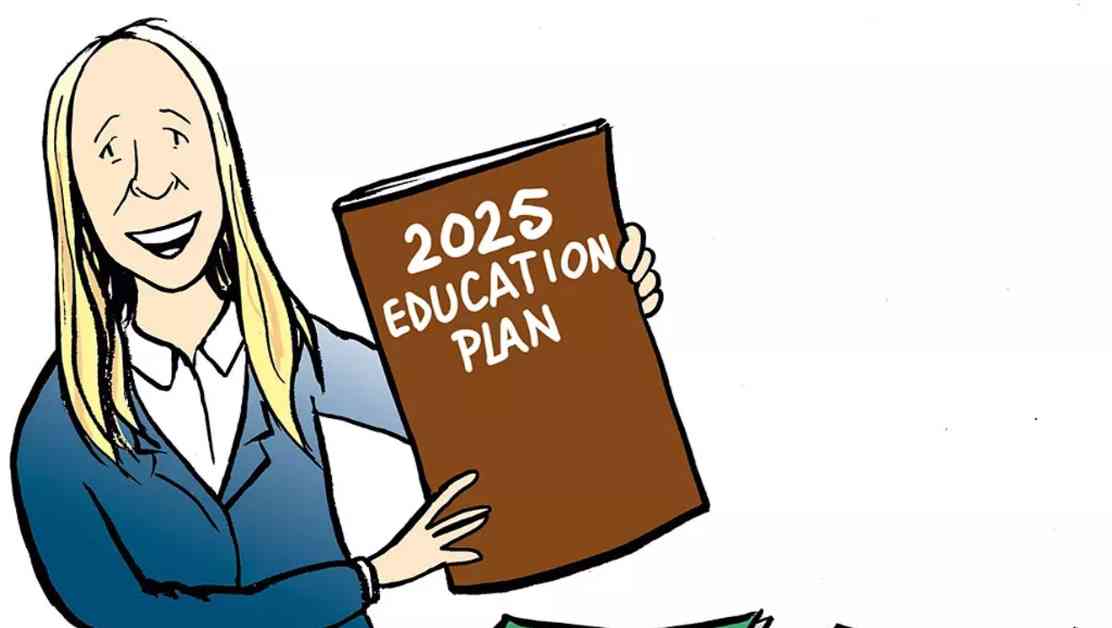The challenges facing Vermont’s education system continue to persist, despite the governor’s latest proposal to address these long-standing issues. Governor Phil Scott’s ambitious plan aims to transform education by tackling the increasing costs and declining student enrollment that have plagued the state for decades.
Education Secretary Zoie Saunders has been actively engaging with lawmakers to outline the specifics of the proposal, which include reforming the funding structure, consolidating 119 school districts into five regional ones, and expanding student eligibility for school choice—all to be implemented within a tight two-year timeline. While these changes may seem drastic, they echo past attempts to reform Vermont’s education system dating back to the early 1960s.
The history of education reform in Vermont is fraught with challenges, as evidenced by the struggles to gain widespread support for previous proposals. The state’s failure to enact meaningful change highlights the complexities of navigating the diverse needs and perspectives of different communities and socioeconomic backgrounds. House Education Committee chair Peter Conlon emphasizes the difficulty of implementing sweeping reforms that impact deeply ingrained traditions and values.
Past initiatives, such as the 1963 task force convened by Governor Phil Hoff, aimed to address the disparities in educational opportunities across the state by consolidating school districts into regional entities. However, opposition from proponents of local control thwarted these efforts, leading to the eventual defeat of proposed legislation. Decades later, in 2019, then-Education Secretary Dan French proposed a comprehensive restructuring of the education system with a focus on regional governance and funding reform, mirroring elements of Scott’s current plan.
The release of the so-called “Blueprint for Transforming Vermont’s Education System” coincided with the passage of Act 46, a controversial law that mandated school district mergers to streamline operations and enhance academic offerings. The ensuing community divisions and bureaucratic challenges raised questions about the feasibility of further reform efforts. The subsequent disruption caused by the COVID-19 pandemic further delayed the state’s progress in addressing long-standing education issues.
As Vermont grapples with escalating property taxes and calls for reform, the urgency for change is palpable. Governor Scott’s proposal has sparked debate among lawmakers, particularly regarding the expansion of school choice eligibility. Despite concerns about the plan’s scope and implementation details, legislators acknowledge the need for decisive action to address funding and governance challenges.
The road to education reform in Vermont is fraught with obstacles, as evidenced by the state’s history of failed attempts to overhaul the system. Lawmakers face the daunting task of balancing competing interests and priorities while striving to deliver a high-quality education that is financially sustainable for all Vermonters. As the current proposal navigates the legislative process, the state must confront the complexities of achieving consensus on critical reforms that will shape the future of education in Vermont.
Alison Novak, a seasoned journalist with a passion for K-12 education reporting, brings a unique perspective to the ongoing dialogue surrounding education reform in Vermont. With a keen eye for detail and a deep understanding of the challenges facing the state’s education system, Novak sheds light on the complexities of enacting meaningful change in a landscape rife with historical precedent and diverse stakeholder interests. Her insightful analysis captures the essence of Vermont’s educational journey, illuminating the path forward for policymakers, educators, and communities alike.









